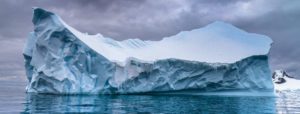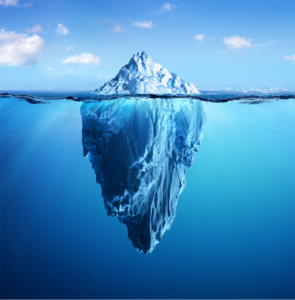Read the Following Selection
Read the following selection, or click on the play button below to listen aloud.
Glaciers and Icebergs
What Is a Glacier?

A glacier is a huge sheet of ice that forms on land. The largest glacier in the world is in Antarctica. This glacier is over 400 km long and about 100 km wide. Some glaciers are over 1 km thick.
How Do Glaciers Form?
Glaciers form in cold places where the snow does not all melt away. Over years, many heavy layers of snow build up. The weight of all the snow pushes the snowflakes together until they form ice.

Do Glaciers Move?
You might not think that ice can move on its own, but glaciers do move. They slowly stretch out and move across the landscape. When a glacier reaches the ocean, the ice floats. The part of a glacier that floats in the ocean is called an ice shelf.
What Are Icebergs?
Sometimes pieces of ice break off a glacier or ice shelf and float in the ocean. These floating pieces of ice are called icebergs. Some icebergs are huge and some are much smaller. If you see an iceberg, it can be hard to tell how big it really is. Why? Most of the iceberg is under the water. You see only the part that shows above the water.
Now, show what you know!
Complete some questions about the reading selection by clicking “Begin Questions” below.









